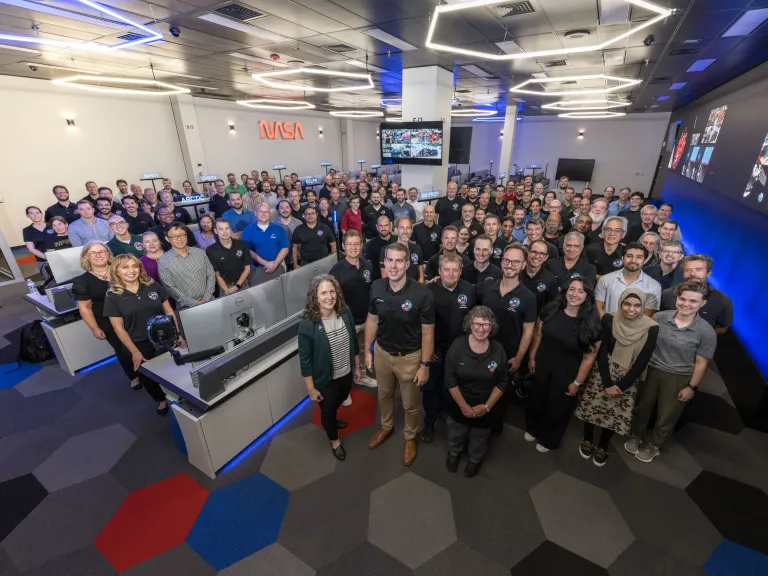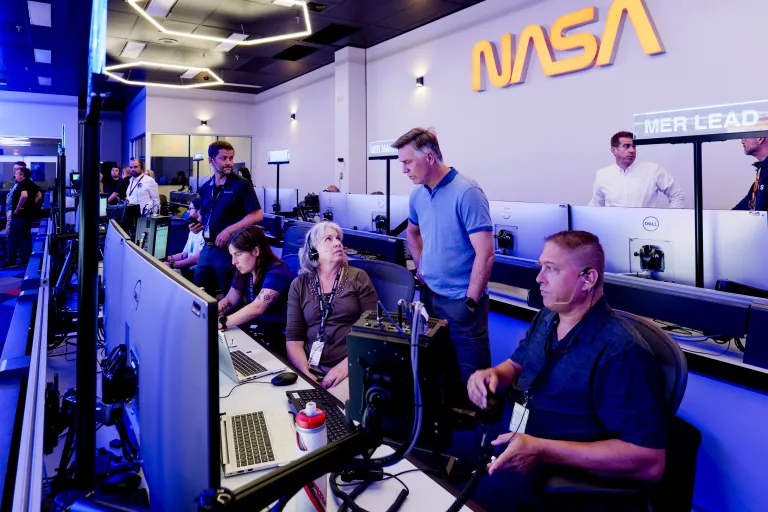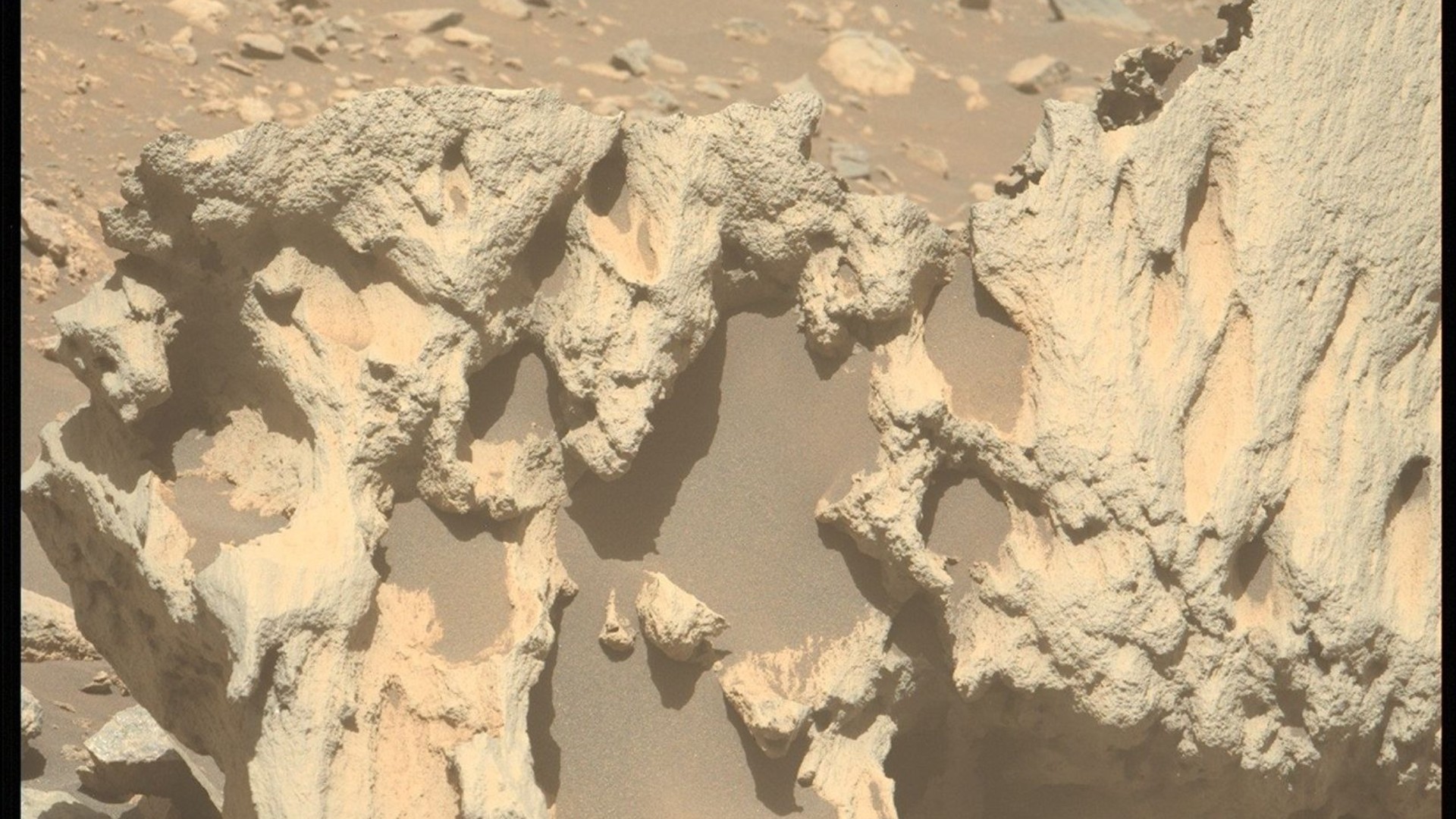NASA debuts new Orion mission control room for Artemis 2 astronaut flight around the moon (photos)
Orion is so packed with technology that the old Mission Control room needed an annex.

With shiny new next-generation spacecraft come the complex systems required to track their technologically advanced systems. When it comes to NASA's Orion spacecraft, that need is a whole extra room of monitors.
NASA has opened a new complex in the Mission Control Center at its Johnson Space Center (JSC) in Houston ahead of the Artemis 2 mission to send astronauts around the moon aboard the Orion space capsule — the vehicle's first-ever crewed flight test. JSC's new Mission Evaluation Room (MER) will provide behind-the-scenes, in-depth data analyses of Orion to augment the in-flight operations coordinated inside the main White Flight Control Room (WFCR).
The new facility, which opened Aug. 15, will act as Orion's engineering brain trust, with 24 console stations set to be staffed 24/7 during the roughly 10-day long duration of the Artemis 2 mission with people from NASA, Lockheed Martin, the European Space Agency (ESA) and Airbus — all responsible for different parts of the spacecraft's manufacturing. MER will be crucial to monitoring the breadth of Orion's systems and ensuring the spacecraft and crew's safety around the moon, in the event of an unexpected event, according to a NASA update.
The job of those working MER's data display monitors will be to compare real-time data with Orion's expected performance, and to troubleshoot any issues that may arise. While those inside the WFCR are responsible for flight operations, engineers inside MER will be tasked with digging into the numbers to diagnose problems and help provide solutions.
Beyond solving hiccups in real time, MER aims to capture detailed mission data that feeds into planning for Artemis 3 and beyond. "Data collection is hugely significant," Trey Perryman, JSC's lead for Orion Mission and Integration Systems, said in the NASA statement.
"The operations team is flying the spacecraft, but they are relying on the Mission Evaluation Room’s reachback engineering capability from the NASA, industry and international Orion team that has designed, built and tested this spacecraft,” Perryman said.
Orion, as well as NASA's Space Launch System (SLS) rocket sending it to space, are measurable steps forward compared to technology utilized during the agency's Apollo program. In addition to the redundancy MER offers for spacecraft safety during deep-space missions, it is also a representation of the leap in technology from humanity's last journey to the moon in 1972 and now — requiring the cooperation of international hardware and contractors as well as organizations in and outside the private sector to centralize a coordinated expertise.
Breaking space news, the latest updates on rocket launches, skywatching events and more!

With MER now in place, NASA's Mission Control is effectively a two-room operation: one to fly Orion and another to monitor its health. Artemis 2 will be the first test of that partnership, setting the standard for Artemis 3 and beyond.
With Artemis 3, NASA plans to land astronauts on the moon for the first time since Apollo 17. Future missions in the Artemis program aim to create a sustained presence on the lunar surface as a staging ground for eventual crewed missions to Mars.

NASA is currently targeting no earlier than February 2026 for Artemis 2, with a mission window open through April. NASA has selected astronauts Reid Wiseman, Victor Glover and Christina Koch, and Canadian Space Agency astronaut Jeremy Hansen as the Artemis 2 crew. If that mission is deemed a success, NASA hopes to launch Artemis 3 sometime in 2027.

Josh Dinner is the Staff Writer for Spaceflight at Space.com. He is a writer and photographer with a passion for science and space exploration, and has been working the space beat since 2016. Josh has covered the evolution of NASA's commercial spaceflight partnerships and crewed missions from the Space Coast, as well as NASA science missions and more. He also enjoys building 1:144-scale model rockets and human-flown spacecraft. Find some of Josh's launch photography on Instagram and his website, and follow him on X, where he mostly posts in haiku.
You must confirm your public display name before commenting
Please logout and then login again, you will then be prompted to enter your display name.

